Some things are forever. Amazon pricing isn’t one of them. Once you figured out what to sell, you’ll need to find the best Amazon repricer tool to stay competitive and scale your ecommerce business.
What is Amazon Repricing?
Product repricing in the brick and mortar world is pretty simple. You have a product that’s selling at a specific price point. If the wholesale price goes up, your store rent goes through the roof or there’s a sudden decrease in supply and increase in demand, you might put the price up a bit.
On the other hand, if the wholesale price drops, demand decreases dramatically or your competitors significantly drop their prices, you may decrease the price of your item so you stay competitive.
In the world of ecommerce, things are a little different. Just like in the brick and mortar world, ecommerce sellers reprice goods to stay competitive and make a profit.
Strict policies prevent third parties from including branded materials or up-selling goods to Amazon’s customers. Plus, the customers themselves aren’t all that interested in learning more about you.
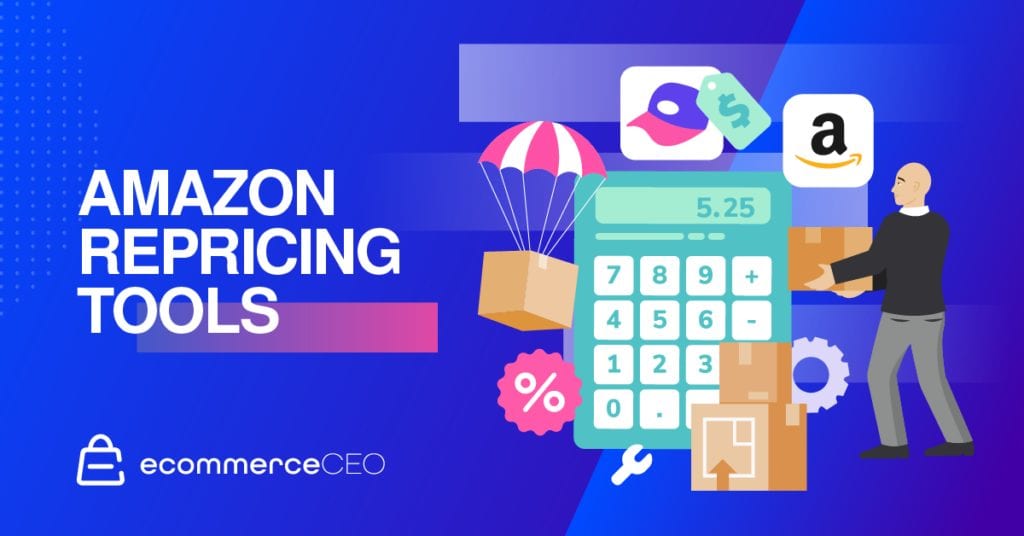
On a marketplace like Amazon, you can’t completely avoid competing on price once you optimize your listings. A smart repricing strategy can give you an extra edge.
Using Repricing Software To Automate Pricing and Maximize Profits
Repricing used to be pretty expensive. You had to manually type up prices, do competitor analysis and get the new prices over to your distributors. This took time and money away from growing your business. With the rise of marketplaces and easy to use software, sellers no longer face these kinds of issues.
If Amazon is a big part of your sales strategy investing in software that helps you stay on top and saves you time isn’t a luxury. It’s a smart move. The right piece of software will give you full control over your strategy and let you set specific rules in place. Instead of staying up all night clutching that cup of coffee and looking at competitor prices, you can put your energy in the things that matter.
To make it in ecommerce you need to master the skill to work on your business, not just in it. That means utilizing every tool you’ve got access to.
What Does An Amazon Repricer Tool Do?
Using a great repricing tool is about more than efficiency. It minimizes the level of emotion associated with your products. Sellers can be under a lot of pressure. You know just how much you’ve paid for an item and how much profit you need to make to come out on top. When you are responsible for a team’s well being and have a few plates up in the air, the pressure can build up.
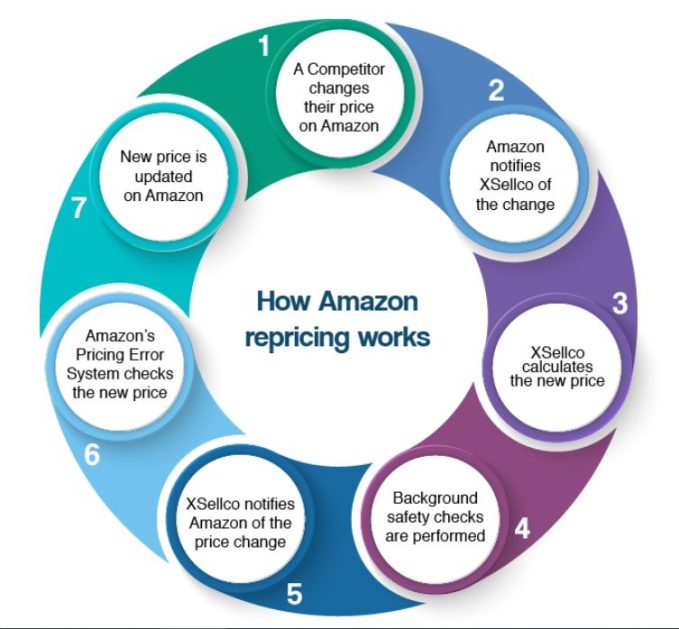
You are never going to have full control over your product’s performance. You can take steps to optimize it and get it ready for the good fight for the Amazon price box. But, once you’ve done your bit, it’s better for your emotional health and the health of your business to let it go.
A repricing tool creates a barrier between you and the product. By decreasing some of that stress you can simultaneously increase your own performance and that of your store.
Finding the Best Amazon Repricing Software
Repricing tools come in all shapes and sizes. Some are perfectly suited for sellers who just want to see what repricing can do for them. Others are designed for large or enterprise-level sellers who are looking for extra functionality and support.
Each comes with its own set of advantages and disadvantages. With so many options out there, finding the best Amazon repricing tool is no easy task. Let’s take a look at a quick amazon repricer comparison.
Best for Amazon/Ebay: RepricerExpress
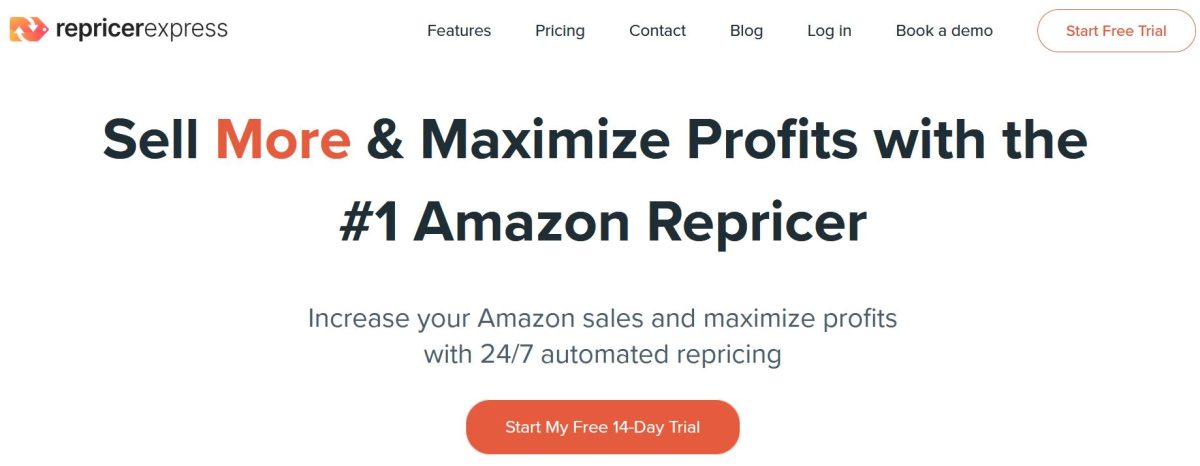
RepricerExpress is aimed at Amazon FBA and Featured Sellers and helps you set up your repricing strategy with the Buy Box in mind. Plans start at $55 a month for sellers with less than 2,500 SKUs and go up to $249 a month for sellers with 50,000 SKUs. All plans include continuous repricing.
This is a great solution for Amazon sellers that sell on Ebay and other marketplaces because every plan covers other channels as well.
Best For Experienced Amazon Sellers: Sellery
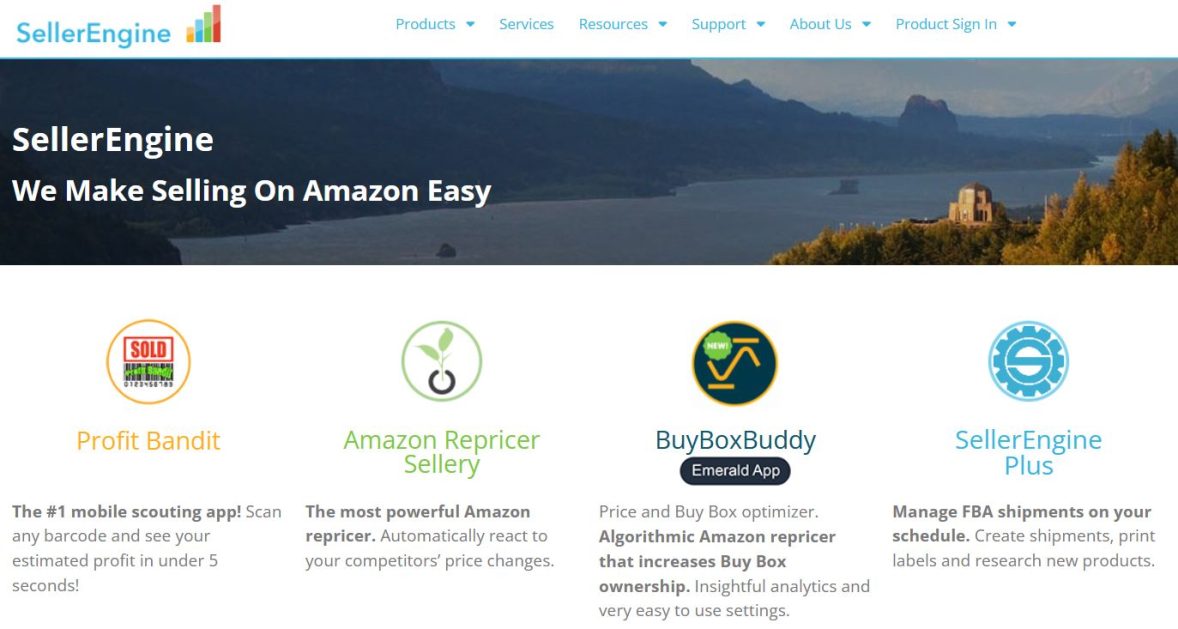
Sellery is a premium product designed by SellerEngine. It supports intelligent repricing strategies and experiments.
Its price depends on how much you sell. The software will cost you 1% of your sales, starting with a minimum of $100 a month and a maximum of $2,000. Unless you are selling at least $10,000 a month, this probably isn’t the tool for you. Even then, you need to carefully calculate the benefits of using Sellery against the potential cost; you’ll have to pay $1,000 for every $100,000 you make a month.
Sellerly definitely isn’t for everyone. If you like how the SellerEngine team works, you can try SellerEngine Plus. It’s an affordable all-in-one solution with repricing capabilities. If you want a tool that just happens to do repricing, then this one is worth a second look.
Best Budget Repricer: RepriceIt
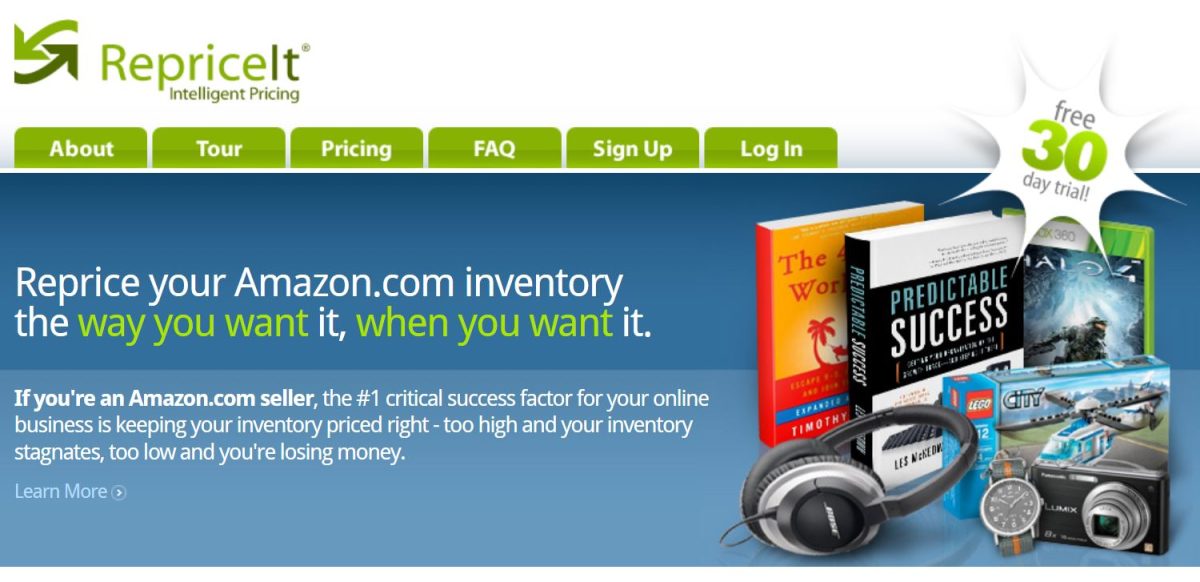
Looking for an affordable amazon repricer solution? You’ve got it. RepriceIt starts at $9.95 per month if your inventory is under 500 SKUs. It has seven different plans, designed for sellers at various stages in the game. While you don’t get some of the bells and whistles you’ll see with other repricers, you’ll have all the basics you need to start implementing a solid repricing strategy right away.
Best For High Volume: Teikametrics
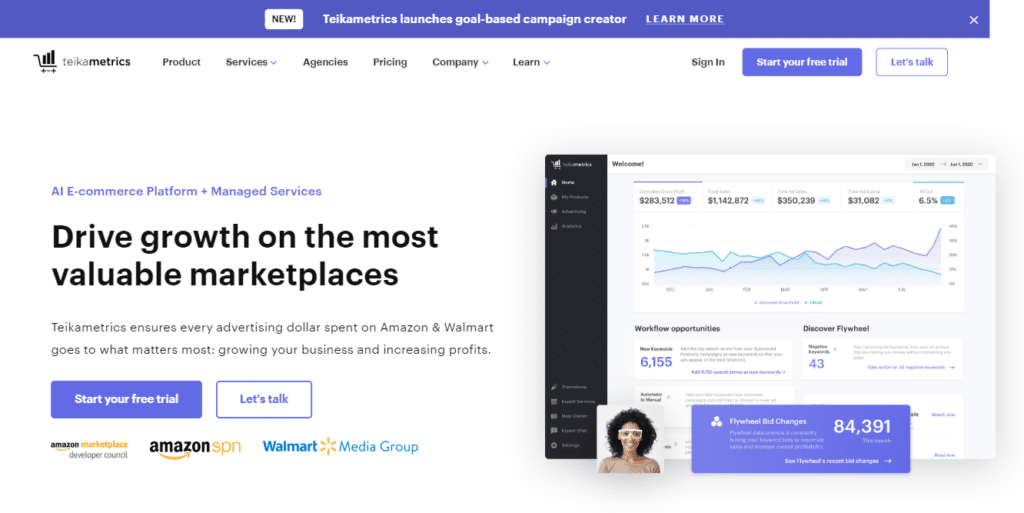
The Teikametrics repricing solution is great for Amazon FBA sellers with large inventories. The team will help you work out a repricing strategy that maximises your assets and gets results. This isn’t a one-size-fits-all deal. They’ll work with you to develop a tailored solution that will help your product put its best price forward.
If you are looking for a cheap solution, this isn’t for you. But, if you are willing to invest the money, the Teikametrics Amazon repricer solution could be the extra edge you need.
Best For Enterprises: Wiser
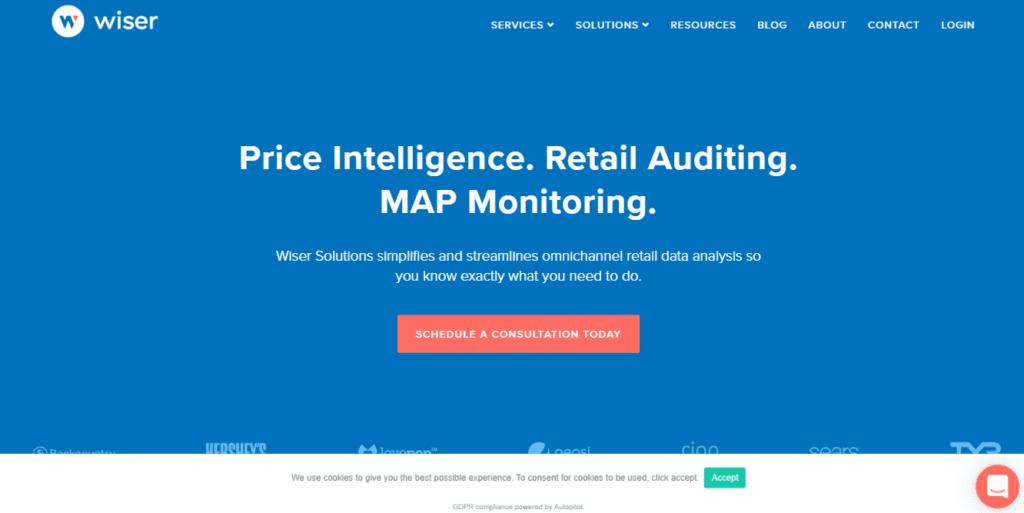
Wiser is an algorithmic Amazon repricer tool. Desperate for the Buy Box? Wiser uses a predictive Buy Box algorithm that calculates the maximum you can charge for an item and stay in the Buy Box. It offers great customization, since you can exclude competitors or target specific sellers. Wiser can be as flexible as you need it to be.
Best For Beginners: SellerRepublic
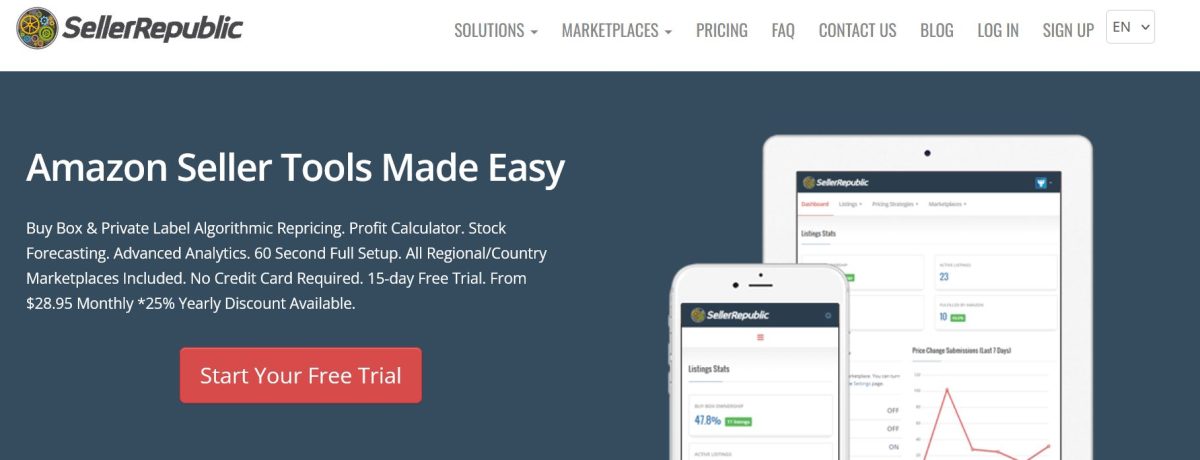
Features wise, SellerRepublic offers all the standard tools a good Amazon repricer has. It uses intelligent repricing to help you match your competitors and you can create an unlimited number of specific rules that guide the software’s actions.
SellerRepublic is quick to set up and great for Global Amazon sellers with relatively low amounts of products. Their Lite plan covers up to 50 listings and costs $8.95 a month. For $18.95, you can get up to 500 listings.
Best End To End: Feedvisor
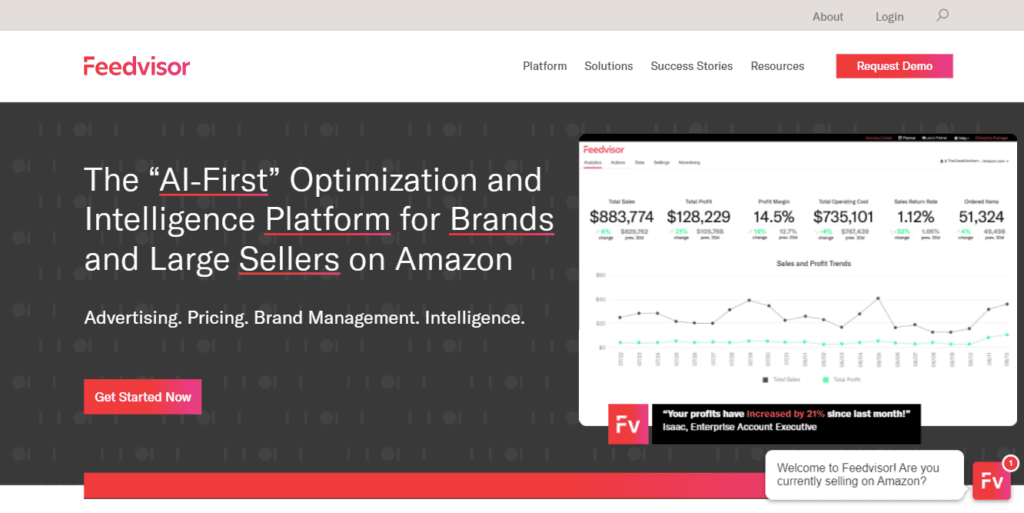
Feedvisor relies on algorithmic repricing and uses machine learning to power up your repricing strategy in real time. Everything is optimized to help you win that Buy Box, as the tool works through thousands of data points to find the best way to get your listing in there.
While Feedvisor is designed to keep you competitive, it also calculates the best price so you can maximize your profits. This isn’t a race to the penny, this is a smart repricer that wants to give your product its best shot. While they do have a plan for small to medium sellers, Feedvisor is best suited for large or enterprise sellers who are ready to make an investment.
So What’s The Best amazon repricing software
All these tools have the same basic functionalities. They help you track and match your competitors, and create rules that optimize your prices and win the Buy Box. The most important thing is to find the one that suits your budget and current selling goals.
While Amazon lowered the entry barrier to selling online by giving third parties access to a loyal audience, the marketplace has attracted more than 3 million third party sellers. Amazon marketplace competition is high and price point is a key driving factor.
So if you’re a professional Amazon seller, automated repricing is smart investment to help you maintain a healthy profit margin, while pricing competitively. If you plan to do manual repricing, we have some tips than can help.
The repricing strategies you need in your life
It’s time to talk strategy!

Photo by Maarten van den Heuvel on Unsplash
1. Set price minimum and maximum Price
Pick the lowest and highest price you are happy to sell your product for and use these as your minimum and maximum. This will keep your prices in a predetermined range making sure you don’t suddenly have a disaster on your hands.
To set proper minimums and maximums you need to find the right price for you. If you set your price too high, you’ll be left with items you don’t want sitting in fulfillment warehouses wasting valuable space and costing you money. If you set the price too low, you’ll eat into your profit margins. Plus, it sets future expectations with the buyers which is only going to drive prices even lower as other sellers who can afford to cut their margins emulate you.
Set regular time aside to study how your products are performing. If a specific product has languished in the lower bracket for too long, it may be time to review if selling at that price is sustainable. Don’t be afraid to review your inventory and get rid of items that aren’t shifting.
2. Avoid the race to the bottom, but don’t be scared to compete
Avoid going under your minimum to underprice other sellers by a couple of cents. It is a slippery slope, and one that makes everyone lose. If certain competitors have a history of underpricing you, you can set up rules that excludes them from consideration. That way, your repricing tool won’t take their products into account when setting your prices.
Sometimes, you’ll get beaten. It happens. Instead of chasing the price, it may be time to rethink the entire product listing. Is it as good as it can be? Optimize for keywords, assess your product pictures and make sure you are doing everything you can to get your listing in the top search spot.
Most of the time you want to avoid being the cheapest seller. It eats into your profit margins and is unsustainable long-term. But, if you have a lot of inventory to shift that just isn’t selling, or you are moving items that will be discontinued after this run, offering a low price can be a solid option.
3. Price based on condition

Photo by Robyn Budlender on Unsplash
If you trade in used goods like second hand books, the item’s condition needs to be a part of your repricing strategy. A customer isn’t going to pay more for a “Good” book than a “Like New” one.
Set up rules that keep your price competitive within your category without going above the price of items in higher quality ones.
4. Make data your best friend
Let data guide your repricing strategy. Gather data on your competitors, on the market and on the way your own items are selling.
Relentless measuring and analyzing consumer behavior plays a huge part in Amazon’s success. Everything on the platform is optimized based on past behavior. Long term success needs data at its foundation.
A repricing tool with a powerful analytics functionality can enhance your understanding of customers and help you create a better strategy.
5. Win the buy box
You know the little box underneath the “Add to cart” button on the product listing page? The one that gives you information about other sellers on Amazon who sell the same product you are trying to buy?

That’s the Buy Box. Winning this can help put your product in front of more customers as they are about to make that final purchase decision.
Getting into the Buy Box may not be easy, but it’s worth it. It’s one of the main reason to employ an effective repricing strategy in the first place. Sellers who use FBA already have a leg up, as they are automatically eligible to compete for the Buy Box. If you use a different method for your order fulfillment needs, you need to fit featured merchant status.
To be eligible to compete for it, you need to consider:
- Final price (base price plus shipping)
- Fulfillment method
- Shipping time
- Seller rating
And, you need to be a good seller. That means you’ve got a high customer satisfaction rating, a history of successful selling and high customer metrics. If Amazon are going to put themselves on a limb and feature you in the Buy Box, they want to make sure you can deliver.
Contrary to popular belief, you don’t have to drop your price into oblivion to win the Buy Box. Ryan Grant from The Online Selling Experiment sets his price 1.5% higher than the lowest FBA seller. This helps him maximize profits for each sales and sets him up for success at winning the prized Buy box.
Why The Buy Box Matters
Getting into the Buy Box once actually benefits you long term. Once you are in, you tend to sell more items and get more reviews. This increases your eligibility to be featured again. Like with most things, it’s a self-fulfilling cycle and using dynamic pricing can help you get that first in.
You can make short-term money with a relatively aggressive pricing strategy, but when it comes to winning the long term game you need to strike a balance.
Wait…can repricing hurt my business?
Dynamic pricing and pricing optimization software has made it easy for sellers to change prices in real time. Many sellers worry that changing their prices too often will put consumers off. It’s understandable. If you randomly changed prices in a brick and mortar store, you customers will probably get annoyed.
When marketplaces first took off, customers weren’t used to this different way of doing things. Back in 2005, a study published in The Journal of Monetary Economics found that customers got annoyed at frequent price changes and fluctuations. As ecommerce became an integral part of the way we shop, dynamic pricing strategies became a part of using a marketplace.
When you use Amazon, customers aren’t really buying from you. They are buying from Amazon, and they are usually looking for an affordable option of a specific item. It’s Amazon’s customer centric brand that takes front and centre.
Using the strategies we covered in this post on a branded ecommerce website like Bonobos or Everlane will be disastrous. It will destroy customer trust. To avoid disasters, whenever you try something new, take your environment and your audience into account.
The winning repricing strategy
There isn’t a single repricing strategy that’s going to work for every seller in every situation. You need to balance the act of putting the customer first while still running at a profit.
When you are selling on Amazon, the way you interact with your customers affects Amazon’s relationship with them. This behemoth is all about the customer- their entire model is built around offering a great service at a low price. Don’t anger the beast by trying to cheat their customers. It’s not going to end well.
It can be tempting to hike prices too much when competition is lower or to drop them too far down when things get hot. Prices that fluctuate too often can direct your customer’s attention toward the price instead of the benefits they’ll get from using your product. This hurts the entire marketplace.
When you are just selling on a marketplace like Amazon you can’t compete on things like brand recognition and differentiation. Frequent repricing makes sense in a marketplace but it’s not an excuse to go insane.
Come up with a clear strategy that supports your goals and is in line with your brand values. Smart sellers don’t put all their eggs in the Amazon basket. Accounts get suspended and that can lead to hard hits and revenue loss. If you want to build a brand and sell on your own website and through other channels, consistency can pay off. Are you currently taking advantage of Amazon repricing? Let us know in the comments.









